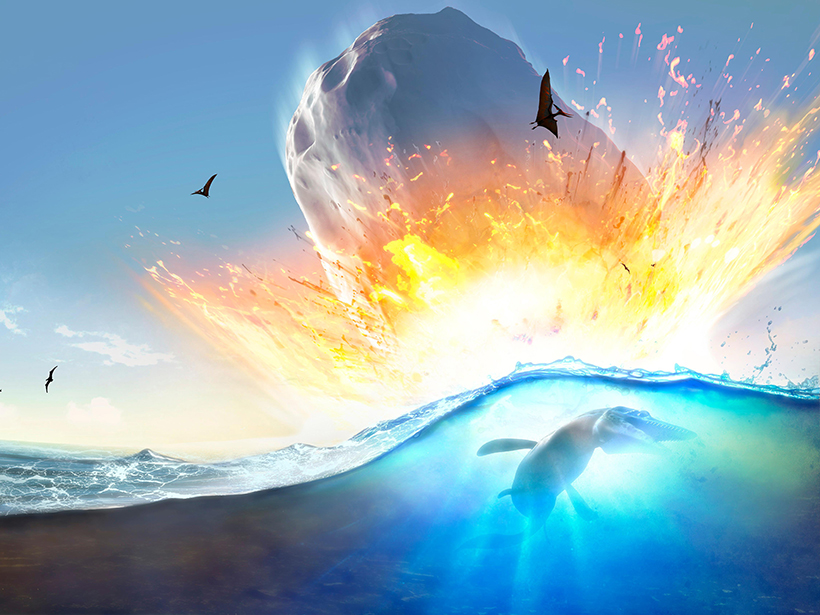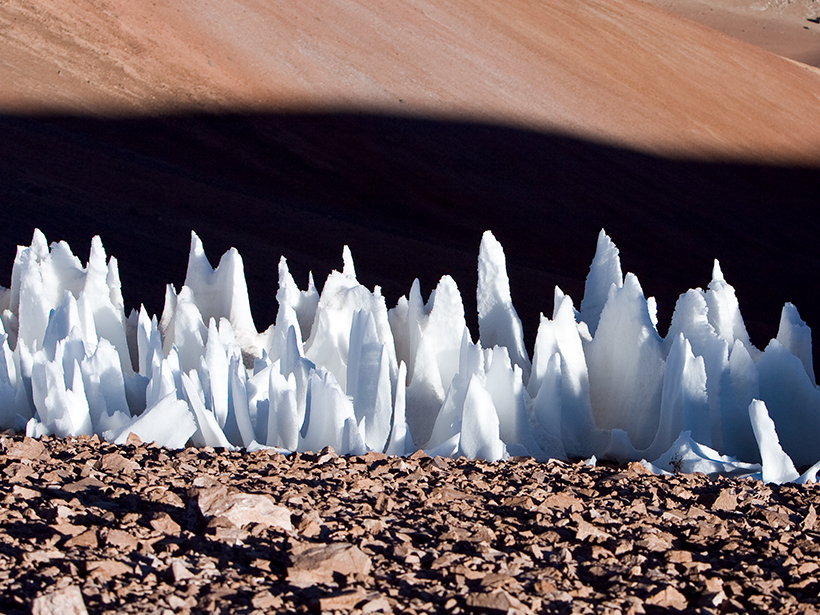The cataclysmic Chicxulub impact roughly 66 million years ago spawned a tsunami that produced wave heights of several meters in distant waters, new simulations suggest.
Katherine Kornei
Katherine Kornei is a freelance science journalist covering Earth and space science. Her bylines frequently appear in Eos, Science, and The New York Times. Katherine holds a Ph.D. in astronomy from the University of California, Los Angeles.
One Fifth of Los Angeles’s CO2 Rises from Lawns and Golf Courses
Measurements of carbon-14 show that roughly 20% of carbon dioxide emissions in the Los Angeles Basin are likely due to the decay of plants in managed landscapes.
Enormous Impact Crater Spotted in Greenland Under Glacial Ice
Ice-penetrating radar revealed a 31-kilometer impact crater—one of the world’s largest—in northwestern Greenland that might have been formed fewer than 20,000 years ago.
Black Carbon Not the Primary Cause of Historic Glacial Retreat
Ice cores and glacial records reveal that European glaciers retreated before the rise of industrialization in the 1870s, suggesting that soot deposition did not primarily drive the shift.
Atacama Desert’s Unprecedented Rains Are Lethal to Microbes
Rainfall in the driest parts of Chile’s Atacama Desert in 2017 resulted in hypersaline lagoons that killed the majority of microbes adapted to millions of years of arid conditions.
Brine Pools Emerge as a New Place to Search for Life on Mars
Some pools of salty water on the Red Planet could contain enough dissolved oxygen for microorganisms and sponges to survive, new calculations suggest.
Huge Blades of Ice May Partially Cover Jupiter’s Moon Europa
Conditions are right for “penitentes” up to 15 meters high to form on the Jovian moon, new research shows. The spires might prevent a lander from exploring Europa’s equatorial region.
How Old Is the Mekong River Valley?
Granite samples collected from the Mekong River Valley reveal that the river’s path was incised roughly 17 million years ago, most likely by increased erosion from monsoon precipitation.
Subsurface Imaging Sheds Light on Dead Sea Sinkholes
Using seismic waves, researchers study sediment layering near the Dead Sea to reveal how the area’s numerous sinkholes form.
Glacial Lake Outburst Flood Captured in Seismic Recordings
A flood that thundered through eastern Nepal in July 2016 left a telltale seismic signature and caused more erosion than local monsoon rains, new research shows.










